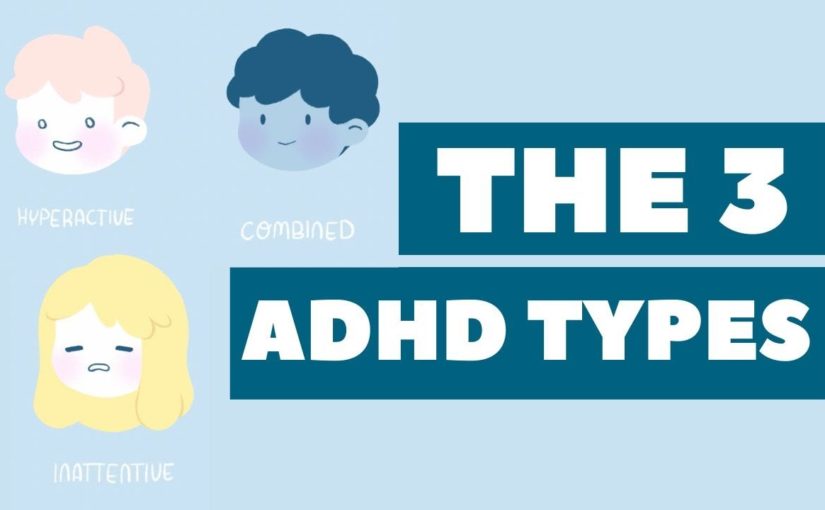00:00:11
What are the different types of ADHD? Did you know that people diagnosed with ADHD often experience the condition quite differently from one another? This is because each individual’s condition is a little varied… but also because there are different identified types of ADHD. Each type has different symptoms and traits that stand out, impacting life in a range of ways.
00:00:38
In recent years, valuable research has shown that ADHD is much more complex than originally thought. If you feel like you’re struggling to process your diagnosis against what the average person believes ADHD to be, it’s okay! You’re not alone. The three different types of ADHD are hyperactive-impulsive type, inattentive type and combination type, which feature symptoms of the first two types. Let’s take a closer look at each of these types and their related symptoms. Hyperactive-impulsive type ADHD Hyperactive and impulsive type is characterized by impulsive actions and hyperactivity. Those diagnosed with this type of ADHD may also display inattention and a lack of focus, but hyperactivity and impulsive behavior will be much more prominent in day-to-day activity. Some of the common symptoms of someone with this type of ADHD include constantly feeling restless and fidgety, talking a lot and fast, having trouble engaging with quiet and relaxing activities, general impatience, and impulse purchasing. Inappropriate comments and speaking without considering what you are saying are also symptoms of this type.
00:01:59
These symptoms can make learning tough, particularly in a classroom setting. Research has shown that people who identify as male are more likely to be diagnosed with this type, particularly younger boys. To receive a diagnosis of hyperactive-impulsive type ADHD, a child up to the age of 16 must have at least 6 symptoms. If you are 17 or older, you must have at least 5 symptoms. These symptoms, in both children and adults, must have been present for at least 6 months. Inattentive type ADHD Inattentive type ADHD is typified more so by symptoms of inattention, rather than high energy levels and impulsivity. Usually, someone who has been diagnosed with inattentive ADHD will find it more difficult to maintain attention, struggle to remain focused and will often have trouble following detailed directions.
00:02:58
As with any type of ADHD, the symptoms of inattentive type will often vary from person to person. Do you become bored quickly? Find it hard to follow instructions? Perhaps you are easily distracted and at times, struggle to listen? Or maybe someone has said to you in the past that you always look like you’re daydreaming. These are all common symptoms of inattentive type ADHD. However, while there are identifiable symptoms, it is important to remember that there is no clear-cut divider between the different types. That means that even though you may well have been diagnosed with inattentive type, you could still experience impulsivity and hyperactivity at times. Interestingly, inattentive type ADHD is statistically more common in those who identify as female than male.
00:03:49
In the past, inattentive ADHD was referred to as Attention Deficit Disorder (ADD), without reference to hyperactivity. Now, however, inattentive type more accurately comes under the umbrella of ADHD. To be diagnosed with this type of ADHD if you are 16 or under, you will need to present 6 or more symptoms for at least 6 months. If you are 17 or older, you must present at least 5 symptoms, also for 6 months or more. Combined type ADHD Combined type ADHD is exactly what it sounds like. Those diagnosed with this type of ADHD display six or more symptoms of inattentive type, and six or more symptoms of hyperactive-impulsive type. This means that someone diagnosed with combined type will likely experience hyperactivity and impulsivity, while also struggling with inattention and distractibility. It may be difficult for them to concentrate in class or at work, and they will likely struggle with self-control.
00:04:54
According to the American Psychiatric Association, statistics show that combined type ADHD is actually the most common ADHD diagnosis among children and adults. How do I find out which type of ADHD I have? A visit to a mental health professional is the only way to get an accurate diagnosis for your condition. They will be able to diagnose you with ADHD if applicable and will also be able to determine which type you have. In the end, that makes it easier for you to understand your condition and to more effectively treat it. When you visit a mental health professional, they will conduct certain tests and provide questionnaires that help to understand your condition more clearly. You may also be asked for your history of past medical conditions. With this information, your mental health professional can more accurately make a diagnosis. ADHD can be a difficult condition to live with. But no matter the type of ADHD you have, there is help available. And remember, always be kind to yourself!



